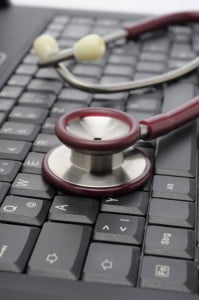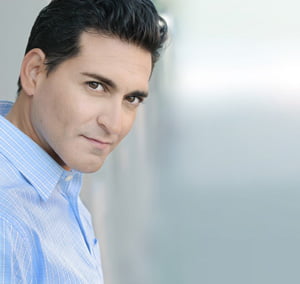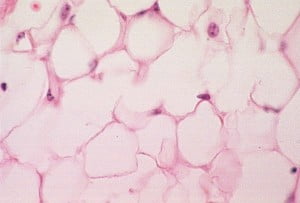 One of the most common questions that I hear as a plastic surgeon is “how long will my facelift last?” I often reply that it depends – on the patient’s individual aging process, the nature of the technique, and future lifestyle factors. The appearance of aging is often very difficult to measure. That’s why I was interested to read a long-term follow-up study that found that – even five years after their facelifts – 76 percent of facelift patients still look younger than they did before.
One of the most common questions that I hear as a plastic surgeon is “how long will my facelift last?” I often reply that it depends – on the patient’s individual aging process, the nature of the technique, and future lifestyle factors. The appearance of aging is often very difficult to measure. That’s why I was interested to read a long-term follow-up study that found that – even five years after their facelifts – 76 percent of facelift patients still look younger than they did before.
There have been many studies that examine the long-term benefits of facelift surgery, including the development of aging factors. However, this new study in the November issue of Plastic and Reconstructive Surgery is the first to perform rigorous, standardized assessments in a long-term follow-up. It examined standardized photographs of 50 patients who had undergone facelift surgery roughly 5 years previously.
To gauge these photographs, there were three separate sets of assessments used. The first was a series of objective measurements that examined common factors, such as the angle of the chin to the neck, or jowl height. There were also two separate types of subjective assessments – localized assessments examining key areas like the nasolabial folds, and an overall assessment of the patient’s appearance.
Based on these assessments, the researchers had a complete picture of how the face it changed over five years. All three sets of assessments showed significant improvement over that time. Although there was some loss of improvement, especially around the neck, the overall picture was still better than the patient had appeared before their facelift surgeries.
The researchers concluded that more than three-quarters of patients (76 percent) still looked younger five years after their facelift. As a result, they write, there seems to be no “significant objective or subjective sign of continued aging or ‘relapse’ in any area except for the neck.”
While liposuction is often portrayed in the media as a glorified weight-loss solution, the reality is far from the myth – maintaining the results of liposuction after surgery is an important commitment that can’t be taken lightly. One woman’s liposuction journey, including some valuable advice about the importance of ongoing exercise, was recently profiled on ABC’s The Doctors.
Jill is a 45-year-old single mother who has long felt self-conscious about her legs, which she describes as “mushy.”
“When I get invited to a pool party, initially I have a panic attack. I’ll help in the kitchen, I’ll hang around, I’ll walk around. It’s not even an issue that I’m going to get into a bathing suit.” She wears long skirts and long dresses to conceal her legs, and confesses to feeling jealous of women with slim legs. “My son is having a bar mitzvah in December – I want to look good. It’s a very scary thing for me to think that I could wear something above my knee.”
Fortunately, Jill was a great candidate for liposuction, as she was not overweight and generally healthy. For her liposuction, surgeons Dr. Andrew Ordon and Dr. Ritu Chopra performed Vaser tumescent liposuction. This technique uses an ultrasonic wand to melt away the fat, so that it can be removed more easily. (A word to the squeamish: the video here shows some surgical footage, and is not for the faint of heart.)
A couple of months after the surgery, she steps onto the stage to show off her new look. Dr. Ordon advises her that it will take 6 to 9 months for all of the swelling and numbness to go away. He also offers advice about how to maintain the look.
“Exercising – so important – that’s how you’re going to maintain this result. We went in there, surgically removed that fat and those figure faults that weren’t budging with exercise, so… focus on exercising your lower body.” He suggests a combination of cardio and weight training as the best approach to maintaining liposuction results. “As long as you maintain a stable weight, those fat cells are gone.”
 Currently, Latisse is the only FDA-approved cosmetic treatment for inadequate eyelashes. On the popular cosmetic website RealSelf, it has an 85% approval rating, and a lot of dedicated fans. Recently, one of the site’s bloggers highlighted some of the different ways that people have been conserving their Latisse doses.
Currently, Latisse is the only FDA-approved cosmetic treatment for inadequate eyelashes. On the popular cosmetic website RealSelf, it has an 85% approval rating, and a lot of dedicated fans. Recently, one of the site’s bloggers highlighted some of the different ways that people have been conserving their Latisse doses.
-
- Using a single Latisse drop each day… by putting the drop into the cap. According to Eva, one of the site’s users, “I put one drop in the cap, and dip the brush in the cap. This way, I can do both eyelids with one drop and one brush.” She says that her eyelashes looked amazing after three weeks using this method.
-
- Using the same Latisse brush for two consecutive days. Latisse comes packaged with 60 applicator brushes, and no more. One plastic surgeon from New Jersey often suggests to his patients that they use one brush for two days straight. By rinsing the brush with water after the first use, and leaving it to air dry, patients have been stretching out their Latisse prescriptions.
-
- Using a skinny eyeliner brush instead of the brushes provided. According to beauty bloggers Beauty in the Bag, eyeliner brushes are better-designed than the brushes in the Latisse package, and can reduce irritation.
-
- Cutting the Latisse brush in half. Some doctors argue that this allows you to use less product and apply the Latisse more efficiently.
-
- Apply as much as you need. This is very subjective, but many RealSelf users argue that a full drop, per eye, per day is probably more than enough for most people.
Before trying any of these techniques, make sure that you discuss them with your surgeon. Otherwise, you run the danger of ultimately wasting your Latisse, or even damaging your eyes.
 Weight loss is a long and difficult journey, but with the Internet, it doesn’t have to be a lonely one. The cosmetic surgery website RealSelf.com has a solid community of users who support each other through their struggles, including bariatric surgery and subsequent cosmetic procedures. A recent post on the website highlighted 10 tips from community members who have undergone gastric bypasses.
Weight loss is a long and difficult journey, but with the Internet, it doesn’t have to be a lonely one. The cosmetic surgery website RealSelf.com has a solid community of users who support each other through their struggles, including bariatric surgery and subsequent cosmetic procedures. A recent post on the website highlighted 10 tips from community members who have undergone gastric bypasses.
1. Follow your doctor’s advice
As a plastic surgeon, I might be a bit biased, but it’s true. For the best possible outcome, do everything your doctor advises, including quitting smoking and following a set exercise routine.
2. Do an honest self-evaluation
Sometimes you need to take another look at your body, habits, and routines to find what you really need.
3. Have the right attitude
Your attitude can be the difference between success and failure. Be practical but optimistic – “keep your head in the clouds and your feet on the ground.”
4. Drink a lot of water
Put away the sugary drinks and pick up some cold, refreshing water. This is especially important to maintaining a good exercise routine.
5. Don’t rush back into eating
It can be hard to stick to the liquid and puréed post-op diet, but it’s important to ease the transition back into regular eating habits.
6. Change your eating habits for good
RealSelf user Cindy probably says it best: “Say to yourself, this food does not taste as good as skinny feels.”
7. Learn coping mechanisms
“You have to see someone and really spend serious time talking about what to expect when you have slimmed down,” says Cynthia J. “You will still have your issues with self worth but you will learn to have your coping mechanisms.”
8. Join a support group
Mutual support will be important along the road to weight loss. Many doctors offer support groups where patients can talk about their journeys.
9. Realize that surgery is only a tool
…and not a miracle cure. Proper diet and exercise are still necessary to living a healthy life.
10. Determine if it’s “worth it”
There are many challenges on the other side of bariatric surgery. After massive weight loss, patients often find that they are left with excess skin, and require body contouring procedures such as the breast lift and tummy tuck. While every journey begins with a single step, you should think carefully about where your journey will take you.

Make-A-Wish of Greater Los Angeles is celebrating 30 years of granting wishes. The organization has officially unveiled their 2012 Season of Wishes Holiday series, and it’s full of heartwarming stories of local wish children.
To support the mission of Make-A-Wish, Dr. Jacob Haiavy and his wife Maryam Haiavy have pledged to grant the wish of a child who has a life-threatening medical condition.
Jordan, a local 12-year old boy, has been diagnosed with a metastatic brain tumor. He deals with difficult challenges on a daily basis. Make-A-Wish and Dr. Haiavy have partnered to make Jordan’s wish to travel to Hawaii with his family come true.
On November 27, people of the community joined us for the 8th annual Season of Wishes , so they could experience the wish and see for themselves the joy that this event brings to families and everyone else who is involved.
Los Angeles Local News, Weather, and Traffic
 California’s medical board is stepping up its investigations into fake medical practitioners, according to a recent report on ABC News 10. Operation Safe Medicine, the investigative unit that examines these cases, has seen a surprising rise in these cases, which involve people posing as doctors in order to reap profits from performing risky surgeries. Compared to last fiscal year, the number of cases has risen from 31 to 61.
California’s medical board is stepping up its investigations into fake medical practitioners, according to a recent report on ABC News 10. Operation Safe Medicine, the investigative unit that examines these cases, has seen a surprising rise in these cases, which involve people posing as doctors in order to reap profits from performing risky surgeries. Compared to last fiscal year, the number of cases has risen from 31 to 61.
This increase in fake medical practitioners has nearly claimed the lives of many Californians. In one case, an Encinitas woman is accused of having posed as a doctor of naturopathy, who “diagnosed” people with Lyme disease. She prescribed injections of bovine stem cells and dimethyl sulfoxide, which wound up hospitalizing one of her patients for six weeks.
Some of the cases border on the macabre, like the case of the San Francisco man who is accused of performing liposuction while smoking a cigar. According to prosecutors, the man operated with no assistant, and actually had the surgery patient hold her own intravenous bag during the procedure. Other cases have centered on laser fungus removal, childbirth, facelifts, and hemorrhoid surgery. It seems that these sorts of deceptions can apply to almost any branch of medicine.
Operation Safe Medicine is a six-person team based in Southern California that has been combating these sorts of cases. However, the report released by the medical board calls for more staff to launch a new unit in Northern California, where it is believed that investigations are needed.
How can you stay safe? The liposuction case involved someone assuming the identity of a physician assistant with a similar name. Before seeking treatment with any medical professional, always be sure to check up on their qualifications. Be on your guard if you were not introduced to them through your family doctor. More than anything, however, remember the old adage – if the price seems too good to be true, it probably is.
Are high-end skin care products really worth your hard-earned cash?
 According to an article in the LA Times, the NPD Group, a consumer research firm, found that prestigious skin-care products priced at $150 or more — generated $418 million in department store sales in the U.S. during the last 12 months ending Sept. 30, 2012.
According to an article in the LA Times, the NPD Group, a consumer research firm, found that prestigious skin-care products priced at $150 or more — generated $418 million in department store sales in the U.S. during the last 12 months ending Sept. 30, 2012.
That kind of consumer confidence translates into an 18% increase over the preceding year, with the average selling price for a jar of skin cream or serum at an average of $236.54.
A resurgence in the marketplace for high-price creams and serums has found no shortage of consumers willing to spend $125 and more for potent moisturizers that promise younger skin.
Some of these facial creams also have specific, exotic ingredients, such as snail serum. Products are marketed to tighten, plump and lift your skin, but pricey due to their manufacturing process. For example, Michael Todd True Organics’ Knu Anti-aging Cream, is fortified with alpha hydroxy acids, organic fruit stem cells at a cost of $150 a jar, but without any preservatives or fillers according to the company’s chairman, Lewis Hendler.
Some say the resurgence is because some customers like the , and the luxurious experience at the counter; it’s something that you can’t find in a drugstore. Others wonder if a high price tag on a jar of complexion cream is a real indicator of its effectiveness, which is something that consumers wrestle with as they compare other brands with the same ingredients selling for less.
Magic Ingredients, But Do they Work?
According to physicians, ingredients like retinoid, glycolic, and alpha hydroxy acids are the proven ticket to better skin. But these ingredients can be found in lower-priced skin care creams with comparable results.
Still, some consumers will always seek the latest trends or signature products when it comes to beauty and skin care even when a high price is attached to them.
A more practical solution for many people is to skip the high-priced products and seek out a proven skin treatment, such as a chemical peel or microdermabrasion. The result will often be superior, and you can avoid the hassle and price tag that may come with departments store skin care products.
Photo by AngryJulieMonday, on Flickr
 Thirty years ago, Make-A-Wish Greater Los Angeles granted its first wish to a sick child, and since then has made a difference in the lives of thousands. This winter, I am proud to be one of the sponsors of the Season of Wishes Holiday Campaign, an annual event that celebrates the heartwarming stories of local wish children. As part of the campaign, there will be public nights of wish granting in Glendale over the course of six weeks.
Thirty years ago, Make-A-Wish Greater Los Angeles granted its first wish to a sick child, and since then has made a difference in the lives of thousands. This winter, I am proud to be one of the sponsors of the Season of Wishes Holiday Campaign, an annual event that celebrates the heartwarming stories of local wish children. As part of the campaign, there will be public nights of wish granting in Glendale over the course of six weeks.
This year’s campaign representative is Melissa Gomez Mosqueda, a nine-year-old from Long Beach. Last year, her wish to have a computer and “super-secret” toys was granted, and her adorable smile is featured on the materials for this year’s event.
Season of Wishes is celebrated across the country by all 62 Make-A-Wish chapters, but it began right here in California, with the first event in Los Angeles in 2005. Breena Gold, President and CEO of the Greater Los Angeles chapter, recently wrote: “We encourage everyone in the community to join us and experience a wish celebration for themselves and see the joy that these events bring not only to the children and their families, but to all involved. Our wish kids will inspire you with their determination and the imagination of their wishes.”
To learn more about each wish child and their special wish, you can visit the websites of the official media partners for the campaign: FOX 11 (myfoxla.com) and KOST 103.5 FM (kost1035.com). To donate to Make-A-Wish Greater Los Angeles, or learn more about the campaign, you can visit their website.
The next presentation night is taking place on Tuesday, November 27 at 6 p.m. at The Americana at Brand. I hope to see you there!
 There was a time when men in cosmetic surgeons’ offices were rare specimens. But there is a cultural shift happening in America today. In recent years, more cosmetic surgeons have been reported higher rates of male patients.
There was a time when men in cosmetic surgeons’ offices were rare specimens. But there is a cultural shift happening in America today. In recent years, more cosmetic surgeons have been reported higher rates of male patients.
As a result of this shift, there has been greater awareness around men’s issues, especially gynecomastia. This is a common condition that affects roughly 4% of males aged 10 to 19. However, gynecomastia can occur at almost any age. Many of my patients have asked: what is gynecomastia, and what causes it?
What is gynecomastia? The word “gynecomastia” is derived from the Greek words for “woman” and “breast.” All men have – at the very least – a very small amount of breast tissue. Gynecomastia is an enlargement of this glandular tissue in the male breast.
What causes gynecomastia? In almost all cases, gynecomastia is the result of a hormonal imbalance. While all men and women have male and female hormones, the emergence of sexual traits is tied to the balance between the two. Women have more estrogens than man, while men have more androgens than women. When these hormones become imbalanced, this can result in abnormal development.
So gynecomastia is usually a side effect? Yes – it almost always results from another problem in the body. Gynecomastia can result from the use of different medications, as well as medical conditions such as hyperthyroidism, chronic kidney failure, and cirrhosis.
Does gynecomastia have anything to do with obesity? No – this is a common misconception. Gynecomastia has no ties to obesity, although obesity can result in what is known as “pseudo gynecomastia.” This refers to overly large breasts resulting from fat deposits in the chest. While they look similar, these fatty deposits will often disappear with weight loss. They can also be removed with liposuction.
What is the treatment for gynecomastia? Once the original cause of the hormonal imbalance has been resolved, gynecomastia can be treated with male breast reduction surgery. This procedure involves removing the excess breast tissue and re-sculpting the chest for a more natural appearance.
 For the past hundred years, plastic surgery has been largely concerned with changing people’s appearances. But what about changing their voices? According to a recent post on RealSelf, injectable procedures that can enhance vocal performances are becoming more popular – although many doctors consider these procedures to be too risky.
For the past hundred years, plastic surgery has been largely concerned with changing people’s appearances. But what about changing their voices? According to a recent post on RealSelf, injectable procedures that can enhance vocal performances are becoming more popular – although many doctors consider these procedures to be too risky.
Like everything else, the voice naturally ages as we get older. British journalist Lynne Wallis, who found that she was sounding older, discovered a procedure called the “voice lift.” During this procedure, says the Daily Mail, “fat is taken from the stomach and grafted on to the vocal folds to plump them up and enhance voice performance.” This is a variant on facial fat grafting, which has become increasingly popular as an alternative to facial implants for lip and cheek augmentation.
In the United States, this procedure is commonly used for cosmetic purposes and can cost up to $25,000. In the United Kingdom, it can be used for medical purposes, in order to help patients with medical problems – such as recovery from throat cancer. Dermal fillers can also be used to alter the vocal cords. These procedures work by plumping up the cords so that the voice sounds less crackly.
However, the injections are limited in their effectiveness, and only tend to improve the voice for a few weeks. Plastic surgeons will almost always decline to surgically alter a normal voice because the risks and benefits are completely out of balance. It’s the same reason why we don’t perform surgical rejuvenation on the hands – these parts of the body are fragile and perform an essential function in everyday life.
In general, these procedures are very risky, and can be very expensive. Anyone considering a voice lift should consult with a surgeon who specializes in problems with the voice, and has experience using fat grafting or dermal fillers. In the meantime, there are a few things you can do to help your voice remain young – quit smoking, limit alcohol intake, and avoid straining your voice.